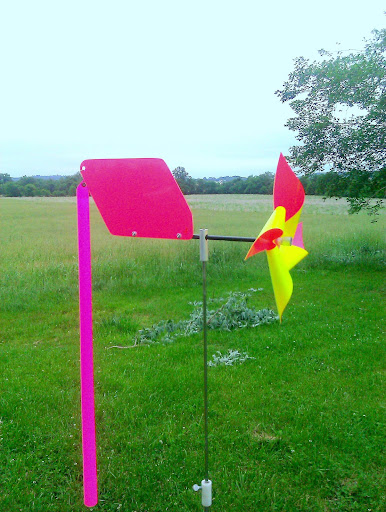IMO the thing that lures wind flag builders into a position where they have to use out of balance to create friction in the pivot to counter the windshield wiper effect is the desire to make their flag as light as possible. To accomplish this they extend the front counterweight and or propeller too far forward, which although it lowers that amount of weight required to balance the flag, creates excessive polar momentum, or flywheel effect if you will. By moving the counterweight or combination of propeller and counterweight closer to the pivot it has to be heavier to work, but the windshield wiper effect is conquered, and the additional weight, while increasing the down force on the pivot, should not be a problem with the materials commonly in use. A steady breeze, that has a stable direction does not show the problem. Wind that changes angle rapidly, and continues to do so is a better test. Another issue that can slow response is too close "sail areas" of what is in front of the pivot, and what is behind it. Putting the propeller close to the pivot helps deal with this problem, when the areas are close, because it gives a leverage advantage to the vane. Or I could be wrong about all of this.





